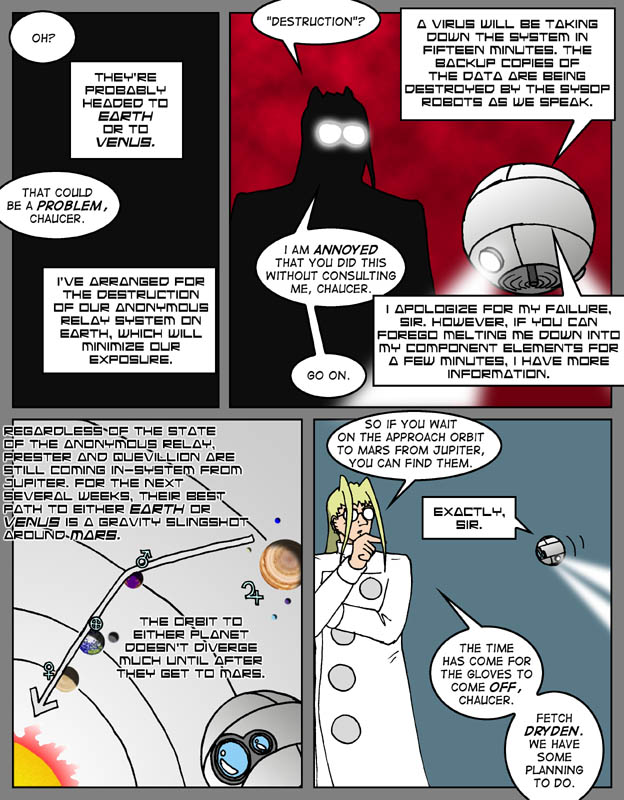
| ||
|
(Jon sez:)  We've been getting a lot of visitors from web sites which are kind enough to
put up links to A Miracle of Science. I'd like to thank all of you
who are linking to us, and all of you who have emailed us saying you like
the comic.
We've been getting a lot of visitors from web sites which are kind enough to
put up links to A Miracle of Science. I'd like to thank all of you
who are linking to us, and all of you who have emailed us saying you like
the comic.
I'd write more, possibly about orbital mechanics, but I've been working twelve-hour days renovating a house I'm buying so I'm too tired to type. I'll have to leave the content of this column up to your imaginations. Imagine I said something really clever and insightful. |
(Mark sez:)  Reading today's "Jon sez" really opened my eyes about a lot of things. It may very well have changed my life in a subtle, yet significant way. At the very least it's going to make me look at lemurs in a different way from now on, I'll tell you that for free.
Reading today's "Jon sez" really opened my eyes about a lot of things. It may very well have changed my life in a subtle, yet significant way. At the very least it's going to make me look at lemurs in a different way from now on, I'll tell you that for free.
The issue of orbital mechanics Jon alluded to is the "gravity slingshot around Mars" our heroes are using as a shortcut to the inner Solar System. Like everything else in MoS, this is 100% rock-solid real science. Here's the skinny: Most fictional spaceships have engines that can constantly accelerate them to high velocities through space, allowing them to zip in straight lines from planet to planet in no time at all. At the present time, though, we don't have the technology to build such an engine. Ordinary chemical rockets can impart a huge impulse to a spacecraft, but they require so much fuel that running them continuously could never be practical. The best we've done so far is "solar electric propulsion" aka the "ion engine" as seen on NASA's Deep Space One experimental mission, but even that accelerates far too slowly to accomplish what we want. DS1's ion engine accelerated it to 10,000 miles per hour, making it the fastest man-made object ever built, but it took twenty months of continuous operation to accomplish that feat. Benjamin and Caprice, needless to say, don't have twenty months to spare in their mission schedule. Fortunately, there's an alternative. As a spacecraft approaches a planet, the planet's gravity pulls at it and makes it go faster. If the spacecraft approaches at the correct angle, it will swing around the planet and pick up so much speed that it doesn't go into orbit (or crash) but instead is flung in a new direction at a much greater velocity, by robbing just a little of the planet's own momentum. Plus, by briefly firing its own engines as it passes the planet, the spacecraft can make further changes to its orbit that wouldn't be possible while coasting through space. This "gravity assist" technique was used on the Voyager probes back in the '70s and '80s. More recent uses of the technique have been more sophisticated: the Cassini Saturn probe swung by Venus twice and Earth once before being sent into the outer solar system, and in 1998 the Hughes corporation rescued a satellite stranded in an incorrect orbit by looping it around the Moon. Caprice's ship, the Qin Shihuangdi, is of course packed full of futuristic technology and can move around a lot faster than NASA's space probes. But still, when you're pursuing dangerous mad scientists, every day counts. |
|